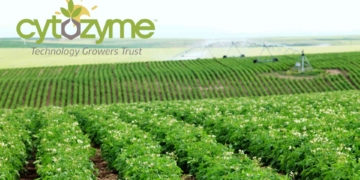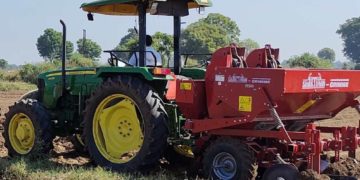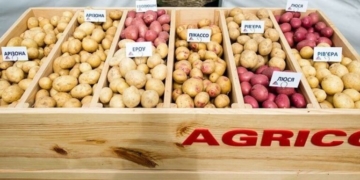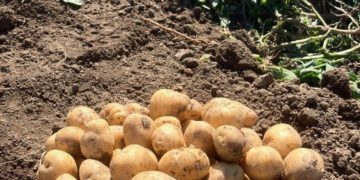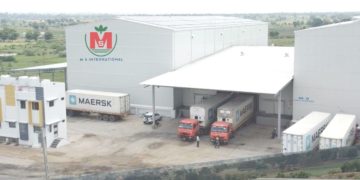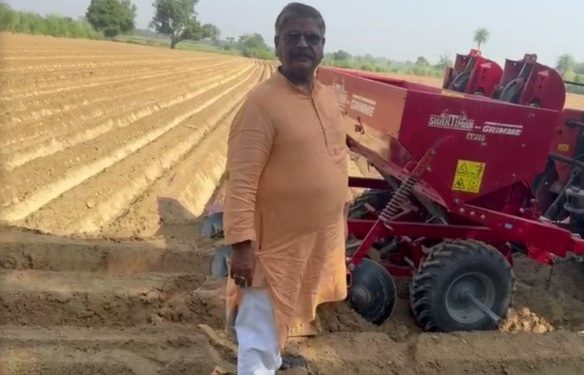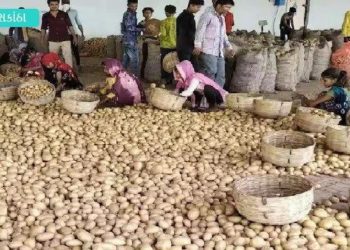A 55-year legacy of potato farming in Uttar Pradesh’s potato heartland
At 67, Mr. Satyendra Singh‘s potato journey spans over five decades, rooted in the fertile lands of Farrukhabad, Uttar Pradesh. His story is not just about farming; it’s a live expamle to the evolution of India’s potato industry and the resilience of its farmers.
The Early Days: Potatoes, Status, and Marriages
Singh’s journey began at the tender age of 12, learning from his father, Late Shri Arjun Singh, a prominent potato farmer in the 1970s. As he recounts those early days, his eyes light up with nostalgia, painting a vivid picture of a time long past but not forgotten.
“Back then,” Singh begins, his voice filled with warmth, “the sight of bullock carts laden with potatoes was a common one. Farmers from nearby villages would bring their harvest to a central collection point in our area. It was a spectacle to behold – the creaking of wooden wheels, the lowing of oxen, and the excited chatter of farmers discussing their crops.”
But the journey of these humble potatoes was far from over. “From our collection point,” Singh continues, “the potatoes would embark on an incredible journey. They’d be loaded onto meter-gauge trains, destined for far-off places like Gujarat and Punjab. Can you imagine? Our local potatoes traveling hundreds of miles to feed people in other states!”
Singh’s eyes twinkle as he describes the trains. “These weren’t your modern freight trains. We’re talking about 4-5 railway coaches, which we called ‘wagons’ back then. These wagons were the lifeline of our potato trade. The demand for these wagons was so high that getting space on them was like winning a lottery – quite literally!”
Chuckling, he elaborates, “The railway authorities had to resort to a lottery system to allot the wagons. Farmers would gather, hearts pounding, hoping their names would be called. It was nerve-wracking but exciting. Getting your potatoes on those trains could mean the difference between a good year and a great one.”
But perhaps the most intriguing aspect of those times was how potato farming influenced social structures. Singh’s voice takes on a more serious tone as he explains, “You have to understand, potato farming wasn’t just about making a living. It was a matter of prestige, a symbol of a family’s status in the community.”
He leans in, as if sharing a secret, “Marriages were often arranged based on the size of a family’s potato farm. The more bighas of potato a family cultivated, the more desirable they were considered as in-laws. Families with 20-30 bighas of potato farms? They were the cream of the crop, pun intended!” He laughs heartily at his own joke.
“It might sound strange now,” Singh muses, “but back then, if you wanted to find a good match for your son or daughter, you’d first ask about the family’s potato farming capacity. It was almost as important as asking about their education or family background. Potatoes were our gold, our measure of wealth and success.”
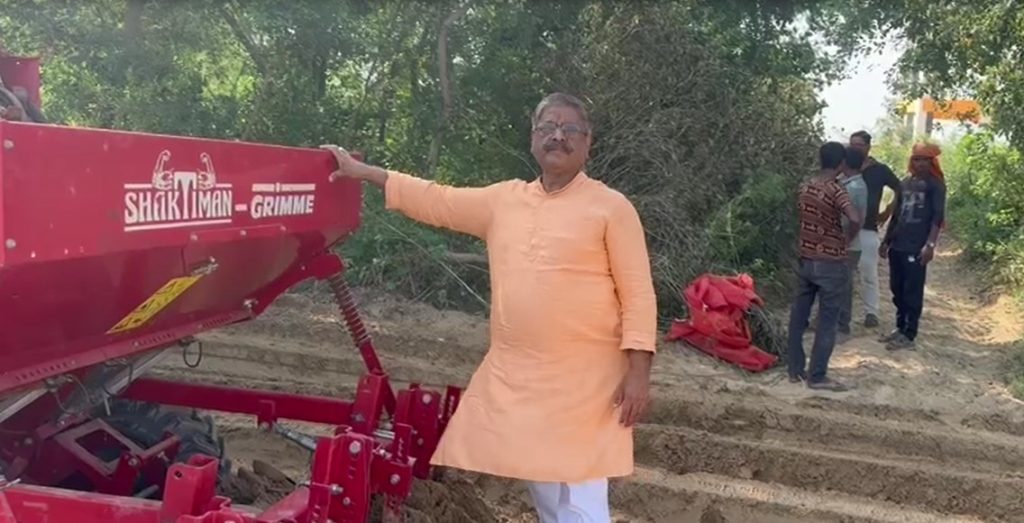
The Present: Embracing Modern Techniques
Today, Singh cultivates potatoes on approximately 80 acres, establishing himself as an influential farmer in the region. He’s a strong advocate for adopting the latest technologies to improve yield and quality. “In the current scenario, seed quality is paramount,” Singh emphasizes, noting that small and average farmers struggle when seed prices exceed Rs. 1,200.
Despite occasional losses, Singh observes that farmers in the area have an unwavering passion for potato cultivation. “They will sow potatoes even if they faced losses in the preceding year,” he says, highlighting the crop’s cultural significance in the region.
A Legacy of Seed Breeding
For the past 50 years, Singh has been involved in breeding seeds promoted by the Central Potato Research Institute (CPRI), including varieties G1, G2, and G3. He fondly remembers the contributions of late Dr. Jagpal Singh from CPRI Modipuram, who played a crucial role in promoting potato cultivation in Farrukhabad and adjoining areas. Singh also acknowledges the ongoing efforts of Dr. Kadyan in the field.
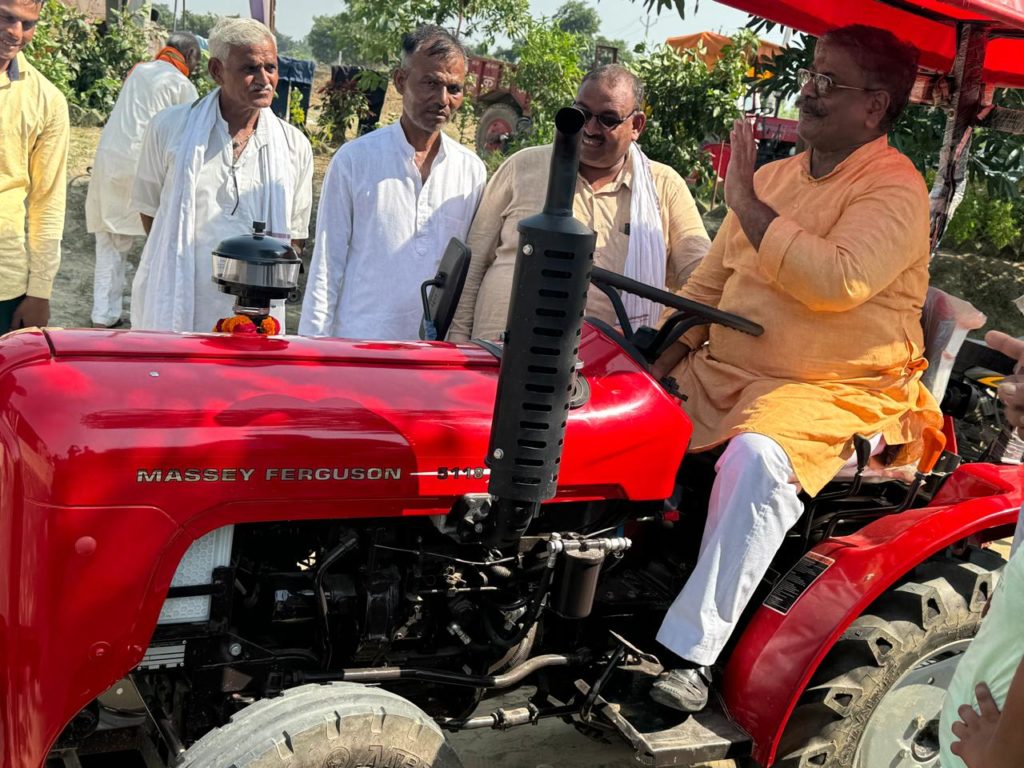
Challenges and Questions
Despite Farrukhabad’s long history in potato production, predating even Punjab and Gujarat’s rise to national prominence, Singh raises concerns about the lack of focus on the district from both the government and processing companies. “No processing factories have been developed in our district or nearby areas like Kannauj, Etah, Etawah, and Mainpuri,” he points out, questioning the disconnect between the region’s production capacity and industrial development.
Looking Ahead
As Satyendra Singh continues his potato farming journey, his experiences offer valuable insights into the challenges and opportunities in India’s agricultural sector. His story underscores the need for balanced development, where traditional farming regions receive the attention and support they deserve to thrive in the modern agricultural landscape.
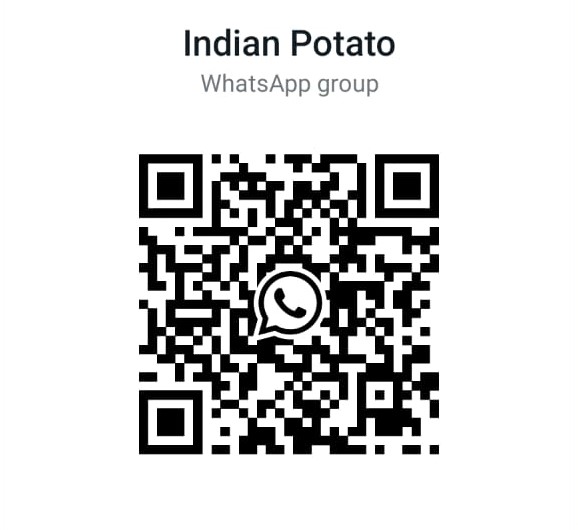
Join the WhatsApp group of Indian Potato to get latest news and updates on Potato happenings in India.

